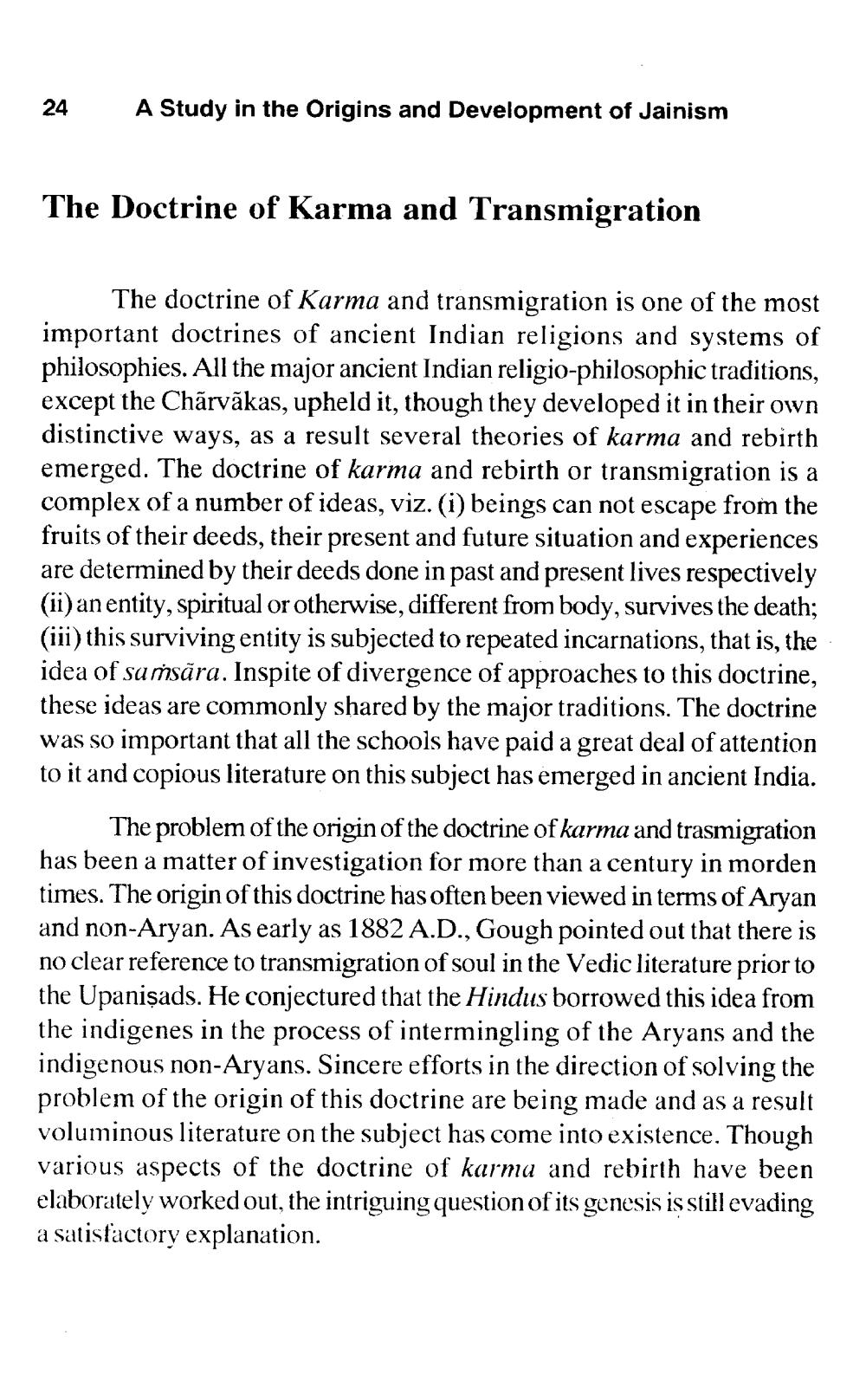________________
24
A Study in the Origins and Development of Jainism
The Doctrine of Karma and Transmigration
The doctrine of Karma and transmigration is one of the most important doctrines of ancient Indian religions and systems of philosophies. All the major ancient Indian religio-philosophic traditions, except the Charvakas, upheld it, though they developed it in their own distinctive ways, as a result several theories of karma and rebirth emerged. The doctrine of karma and rebirth or transmigration is a complex of a number of ideas, viz. (i) beings can not escape from the fruits of their deeds, their present and future situation and experiences are determined by their deeds done in past and present lives respectively (ii) an entity, spiritual or otherwise, different from body, survives the death; (iii) this surviving entity is subjected to repeated incarnations, that is, the idea of samsăra. Inspite of divergence of approaches to this doctrine, these ideas are commonly shared by the major traditions. The doctrine was so important that all the schools have paid a great deal of attention to it and copious literature on this subject has emerged in ancient India.
The problem of the origin of the doctrine of karma and trasmigration has been a matter of investigation for more than a century in morden times. The origin of this doctrine has often been viewed in terms of Aryan and non-Aryan. As early as 1882 A.D., Gough pointed out that there is no clear reference to transmigration of soul in the Vedic literature prior to the Upanisads. He conjectured that the Hindus borrowed this idea from the indigenes in the process of intermingling of the Aryans and the indigenous non-Aryans. Sincere efforts in the direction of solving the problem of the origin of this doctrine are being made and as a result voluminous literature on the subject has come into existence. Though various aspects of the doctrine of karma and rebirth have been elaborately worked out, the intriguing question of its genesis is still evading a satisfactory explanation.




